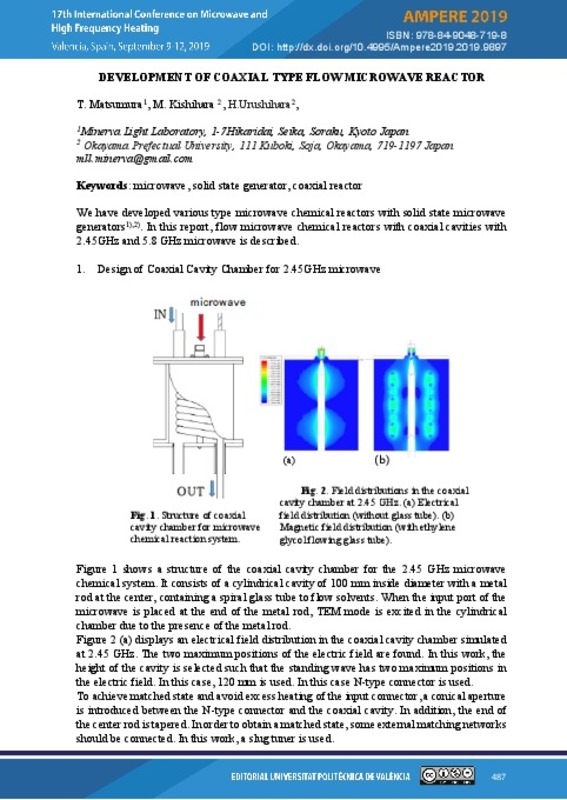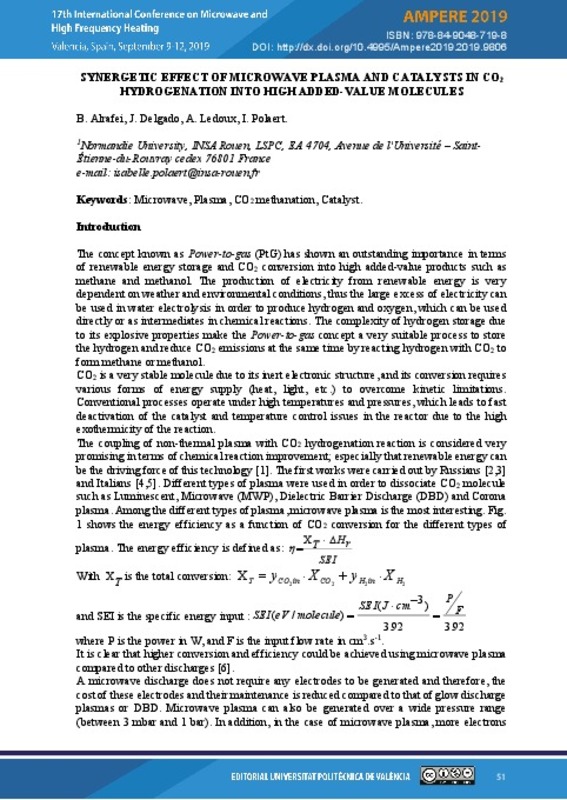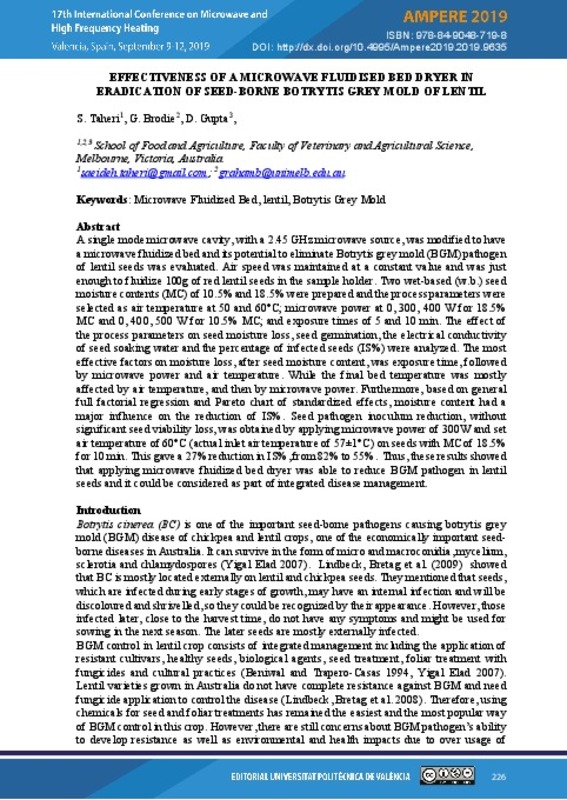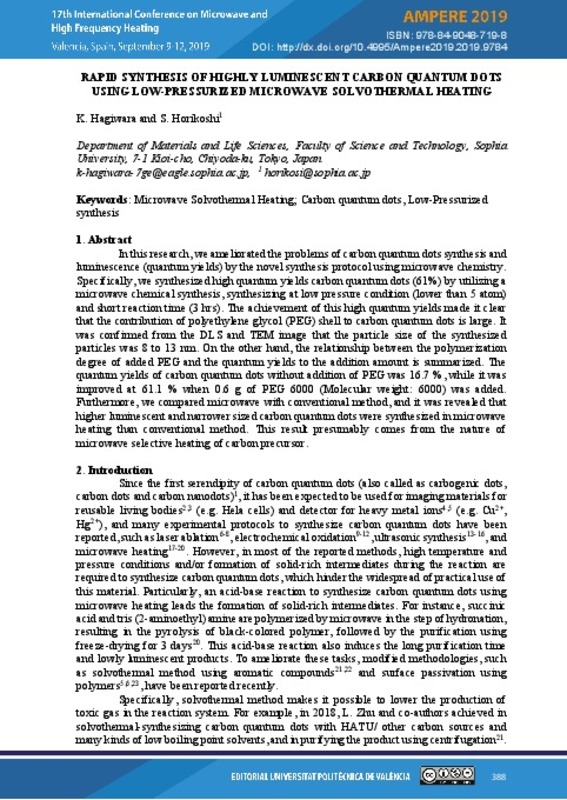JavaScript is disabled for your browser. Some features of this site may not work without it.
Buscar en RiuNet
Listar
Mi cuenta
Estadísticas
Ayuda RiuNet
Admin. UPV
Development of Coaxial Type flow microwave reactor
Mostrar el registro sencillo del ítem
Ficheros en el ítem
| dc.contributor.author | Matsumura, Takeko
|
es_ES |
| dc.contributor.author | Kishihara, M.
|
es_ES |
| dc.contributor.author | Urushihara, U.
|
es_ES |
| dc.date.accessioned | 2019-11-11T13:45:41Z | |
| dc.date.available | 2019-11-11T13:45:41Z | |
| dc.date.issued | 2019-10-15 | |
| dc.identifier.isbn | 9788490487198 | |
| dc.identifier.uri | http://hdl.handle.net/10251/130724 | |
| dc.description.abstract | [EN] We have developed a flow microwave reactor with a coaxial cavity. It comprises a cylindrical cavity of 100 mm inside diameter, a metal rod along its center axis, and a spiral glass tube for flowing solvents and reactants, as shown in Fig.1. When the input port of microwave is placed at the end of the metal rod, the TEM mode is excited in the cylindrical chamber due to the presence of the metal rod. Simulations of the electric field and the magnetic field within the coaxial cavity are shown in Fig.2. This configuration was confirmed suitable for rapid and continuous microwave syntheses of various functional metal complexes. Experimental results are presented of Ir(Ⅲ) complexes for OLED dopants and Ru(Ⅱ) complexes for various sensors. The application to rapid and continuous microwave synthesis of various functional metal complexes were performed in success. In the similar manner as the coaxial reaction chamber of 2.45GHz, a coaxial reaction chamber for 5.8GHz IMS band, dimension of 51mm in diameter and 50mm in height, is designed The electric field distributions in the chamber and the temperature profiles of solvent are simulated using the commercial simulator (COMSOL Multiphysics) for 5.8 GHz, 5W microwave input. Using the simulation results appropriate dimensions of the chamber are determined for the 5.8 GHz operation. When water is used as a solvent the simulation shows that the temperature rises from20℃ to 95℃ after 300 seconds of the microwave irradiation. | es_ES |
| dc.format.extent | 5 | es_ES |
| dc.language | Inglés | es_ES |
| dc.publisher | Editorial Universitat Politècnica de València | es_ES |
| dc.relation.ispartof | AMPERE 2019. 17th International Conference on Microwave and High Frequency Heating | es_ES |
| dc.rights | Reconocimiento - No comercial - Sin obra derivada (by-nc-nd) | es_ES |
| dc.subject | Energy Production by Microwaves | es_ES |
| dc.subject | Microwave CVD | es_ES |
| dc.subject | EM Modelling | es_ES |
| dc.subject | Microwave Material interaction | es_ES |
| dc.subject | Dielectric Properties | es_ES |
| dc.subject | Dielectric Properties Measurement | es_ES |
| dc.subject | Solid State Microwave | es_ES |
| dc.subject | Microwave Processing | es_ES |
| dc.subject | Microwave Chemistry | es_ES |
| dc.subject | Microwave applicators design | es_ES |
| dc.title | Development of Coaxial Type flow microwave reactor | es_ES |
| dc.type | Capítulo de libro | es_ES |
| dc.type | Comunicación en congreso | es_ES |
| dc.identifier.doi | 10.4995/AMPERE2019.2019.9897 | |
| dc.rights.accessRights | Abierto | es_ES |
| dc.description.bibliographicCitation | Matsumura, T.; Kishihara, M.; Urushihara, U. (2019). Development of Coaxial Type flow microwave reactor. En AMPERE 2019. 17th International Conference on Microwave and High Frequency Heating. Editorial Universitat Politècnica de València. 487-491. https://doi.org/10.4995/AMPERE2019.2019.9897 | es_ES |
| dc.description.accrualMethod | OCS | es_ES |
| dc.relation.conferencename | Ampere 2019 | es_ES |
| dc.relation.conferencedate | Septiembre 09-12,2019 | es_ES |
| dc.relation.conferenceplace | Valencia, Spain | es_ES |
| dc.relation.publisherversion | http://ocs.editorial.upv.es/index.php/AMPERE2019/AMPERE2019/paper/view/9897 | es_ES |
| dc.description.upvformatpinicio | 487 | es_ES |
| dc.description.upvformatpfin | 491 | es_ES |
| dc.type.version | info:eu-repo/semantics/publishedVersion | es_ES |
| dc.relation.pasarela | OCS\9897 | es_ES |
Este ítem aparece en la(s) siguiente(s) colección(ones)
-
Ampere 2019 [66]











